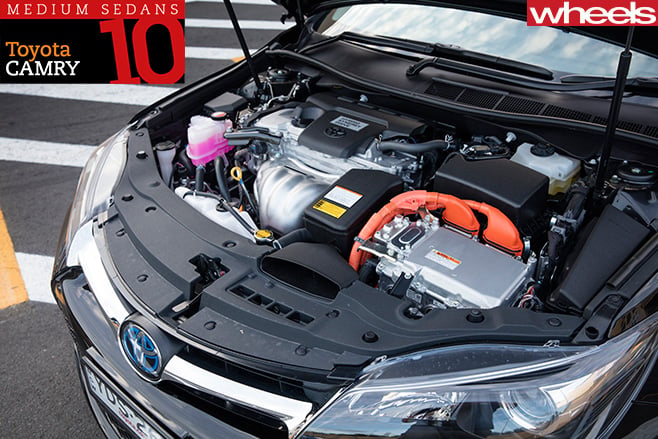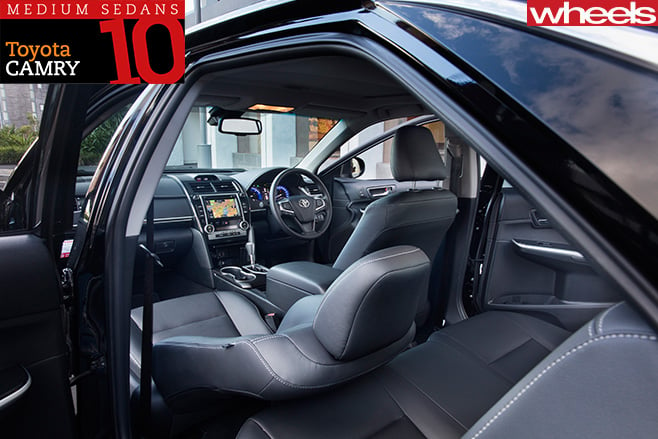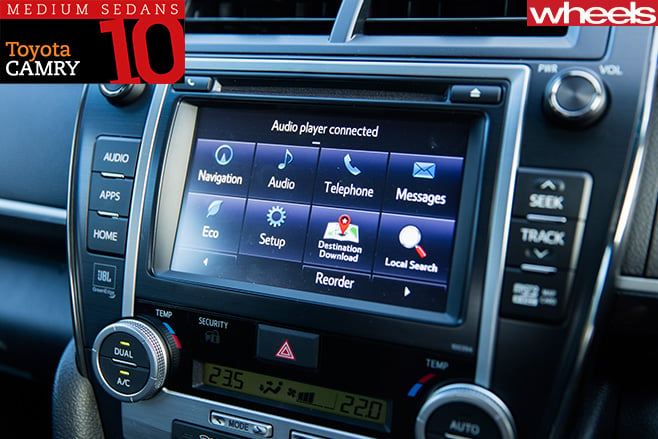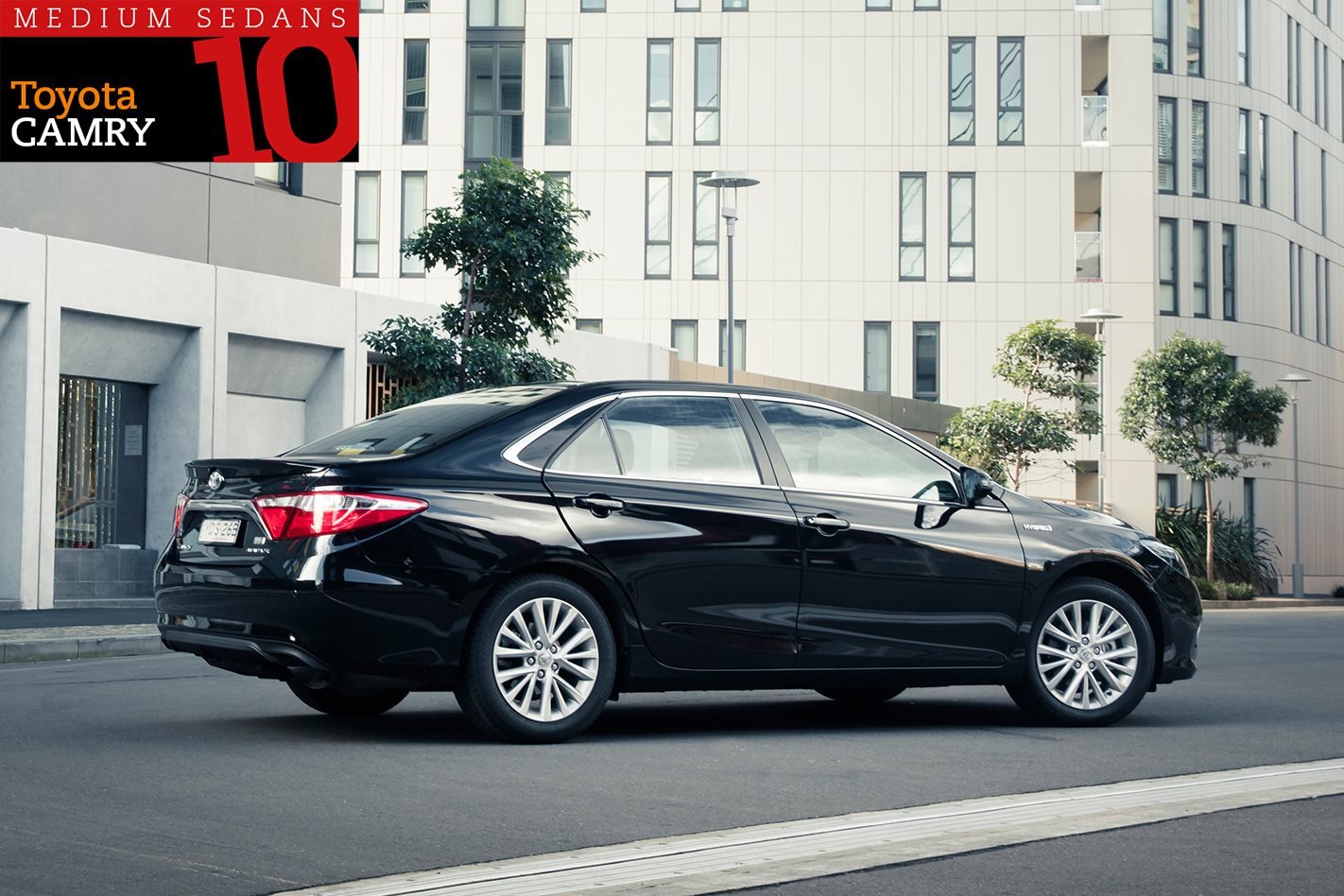Wheels pitches 10 of the biggest sellers in the medium-to-large car segment to see which is the best of the current crop. Here’s number 10, the Toyota Camry.
Can’t wait to see the final score? Jump to the verdict now.
AFTER a world-beating 53 years building cars in this country – longer than anywhere else outside Japan – the Camry tested here will be Toyota’s sayonara to Australia. Yet in much the same way it signals the conclusion of domestic production, the evergreen Camry bookends the back end of this megatest field.
Perhaps unfairly, the Camry Atara SL Hybrid’s last-place position has more to do with the strength of the competition than any serious weaknesses on its behalf… apart from its interior. While last year’s extensive facelift refreshed every exterior panel, cost considerations meant the Aussie-built Camry missed out on the new dash and fittings that debuted elsewhere, leaving it with 2011’s cheap, cheerless plastics and a low-rent feel about as desirable as a home invasion.

Things improve on the move, thanks to Camry’s sweetly muscular petrol-electric drivetrain and its effective suspension tune. Most punters would be surprised how quickly you can hustle a Camry Hybrid, particularly once you get used to the CVT’s lag and learn to stamp on the right pedal early. Its undeniable punch (15.8sec for the quarter) teams with a fluid and nicely balanced chassis that inspires confidence, at least until the ESC senses any kind of yaw and slams on the stability anchors like an irate parent smacking the dinner table.

Yet there’s a fundamentally sound decency to the workmanlike Camry. Even outside the Hybrid’s preferred environment – city gridlock – its 9.1L/100km test average puts it well ahead of the similarly swift Mazda 6 and Ford Mondeo, if not Peugeot’s parsimonious 508 and the VW Group’s outstanding Superb and Volkswagen Passat. And Camry Hybrid’s deep boot is much roomier than it used to be, supported by a full-size 17-inch alloy spare lurking underneath.

In several areas, the final Aussie-built Camry is an admirable piece of work. But compared to where the global benchmark is in 2016, it’s well adrift.
Soon to be expat
Toyota’s ninth-generation Camry is aiming for a US launch in the third quarter of 2017 and will be a substantially altered car. Riding on a brand-spanking Toyota New Global Architecture platform (shared with new-gen Prius), the next Camry is expected to be lighter, stronger and funkier than today’s model, whose underpinnings date back more than a decade. A 2.0-litre turbo-petrol four is rumoured to replace V6 models in the US, likely the 8AR-FTS unit used in Lexus’s 200t variants. No official word as to where Australia’s next Camry will hail from, but expect Thailand, sometime in 2018.
Want to compare the field? Check out all the Family sedan finalists.
 SPECS
SPECS
Price: $44,440 *includes moonroof ($1950)
Engine: 2494cc 4cyl, dohc, 16v + electric motor
Power: 151kW (max system output)
Torque: 270Nm (max system output)
Transmission: CVT automatic
Dimensions (L/W/H/W-B): 4850/1835/1470/2775mm
Weight: 1610kg
Cargo capacity: 421 litres
Tyres: Bridgestone Turanza ER33 215/55R17 94V
Test fuel cons: 9.1L/100km
0-100km/h: 8.0sec
0-400m: 15.8sec @ 147.4km/h
80-120km/h: 4.9sec
3yr resale: 45%
Plus: Keen and refined drivetrain; competent chassis
Minus: Budget interior; laggy CVT; comprehensively outclassed
Verdict: 5.0/10






